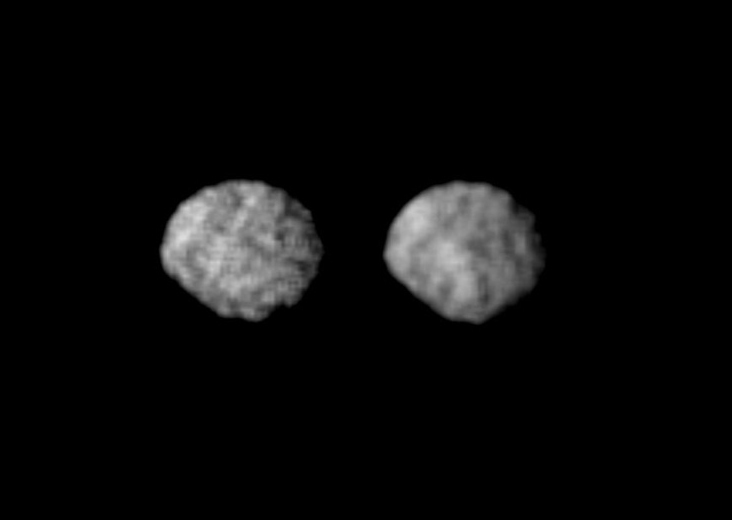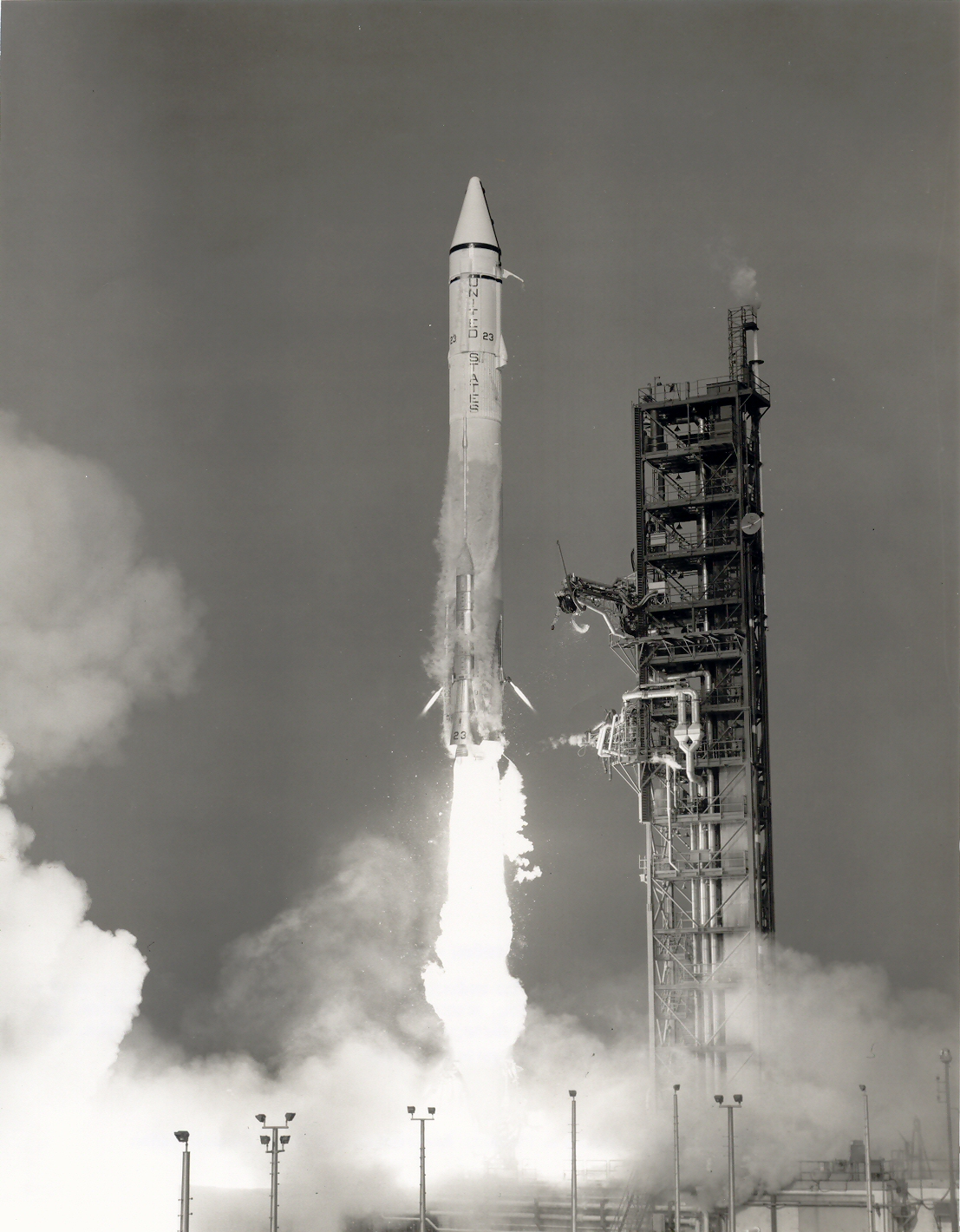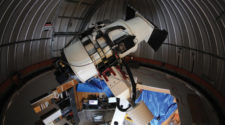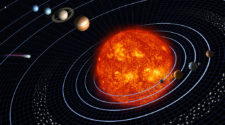MAY 24, 1981: American astronomer Harold Reitsema and his colleagues, observing from Arizona, detect a possible moon of Neptune during an apparent occultation of a background star. This object was confirmed by Voyager 2 during its flyby of Neptune in August 1989 and is now known as Larissa and designated as Neptune VII.

MAY 24, 2001: Comet LINEAR C/2001 A2, the first relatively bright naked-eye comet of the 21st Century, passes through perihelion at a heliocentric distance of 0.779 AU. It is a future “Comet of the Week.”
MAY 25, 44 B.C.: According to approximate orbital calculations, the comet known as “Caesar’s Comet” (formally designated C/-43 K1) passes through perihelion at a heliocentric distance of 0.22 AU. It is this week’s “Comet of the Week.”
MAY 27, 1894: Arctic explorer Robert Peary, together with Hugh Lee and an Inuit guide named Tallakoteah, locate what is now known as the Cape York meteorite on an island off the northwestern coast of Greenland. This meteorite is now on display at the American Museum of Natural History in New York, and it along with other large meteorites that have been found on Earth’s surface constitute the subject of this week’s “Special Topics” presentation.
MAY 27, 2020: Comet SWAN C/2020 F8 will pass through perihelion at a heliocentric distance of 0.430 AU. This comet, which was discussed in a previous “Comet of the Week” presentation, was dimly visible to the unaided eye from the southern hemisphere late last month and early this month, and presently is detectable from the northern hemisphere albeit at a small elongation from the sun. Current information about it can be found at the Comet Resource Center.

MAY 30, 1971: NASA’s Mariner 9 mission is launched from Cape Canaveral, Florida, towards Mars. Mariner 9 became the first spacecraft to orbit Mars, and in addition to discovering numerous important features on Mars’ surface also returned the first clear images of Mars’ moons Phobos and Deimos.

More from Week 22:
Comet of the Week Special Topic Free PDF Download Glossary
Ice and Stone 2020 Home Page


